There are many reasons why the joint in the elbow hurts. These are degenerative changes in cartilage tissues, and inflammatory phenomena, and joint injuries. Many seek to quickly relieve the symptoms of the disease with pills or folk remedies. But the treatment of the elbow joint should be long and complex. In some cases, to avoid severe complications, specific therapy is necessary.
Doctors with complaints of discomfort in the area of the joints and examination of the patient most often diagnose arthritis. The disease usually affects the right and left elbow at the same time. Pathology occurs suddenly, swelling is formed, soreness and redness of the skin in the joint area appear. Discomfort intensifies at night. A violation of the general condition is possible: the patient feels weakness, nausea, his temperature rises, there is an ache in the muscles of the shoulder and forearm.
If the pathology is not treated, the symptoms will intensify, and the disease will quickly become chronic.At the onset of the disease, a specific type of joint inflammation is difficult to diagnose. In the later stages, this is much easier to do.
There are the following forms of arthritis:
- Juvenile. Develops in children. The danger of the disease lies in slowing down the growth of bones connected by the affected joint, and the normal development of intraarticular ones is also disrupted. Therefore, one hand may lag behind the other in growth.
- Tuberculous. The disease leads to the destruction of cartilage tissue. It is characterized by fever, profuse sweating at night, redness and swelling of the skin over the joint.
- Infectious. May occur at any age. It is manifested by high fever, severe swelling and pain in the elbow. Children often experience nausea and vomiting.
- Purulent. Characterized by an acute onset of the disease. The skin around the affected joint turns red. There is severe weakness, fever, headache, nausea, tachycardia. The pain in the arm is intense, constant, often acquiring a shooting character.
- Gonococcal. Pathology is dangerous with rapidly developing atrophy of the muscles of the hand.
- Rheumatoid. For him, subcutaneous seals are typical in the region of the joint and adjacent areas of the shoulder and forearm.
Hyaluronic acid preparations are prescribed in the form of injections. They are injected directly into the joint cavity. The best medicines are Ostenil, Synvisc, Synocrom.
The composition of complex therapy for pain in the elbow joint necessarily includes ointments, creams, gels that have anti-inflammatory, warming, analgesic and regenerating effects. They are dispensed without a doctor's prescription. For arthritis, the following ointments are recommended: Emulgel, Apizartron, Chondroitin, Diclofenac, Kapsikam.
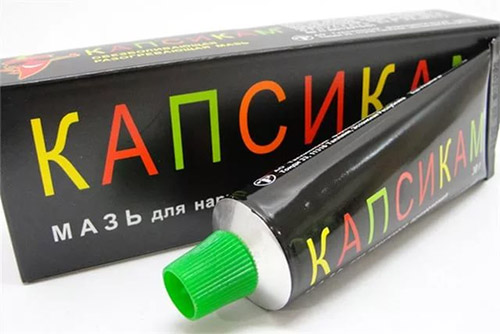
Physiotherapy
To restore the mobility of the joints, massage, therapeutic exercises and a number of other procedures are prescribed:
- laser therapy;
- cryotherapy;
- electrophoresis;
- magnetotherapy;
- impulse currents.
Massage and exercise therapy can be done at home. The rest of the procedures are carried out in the hospital.
If conservative therapy does not bring the expected results, the destruction of the articular joints gradually occurs, and surgical intervention is resorted to. During the operation, the joint is corrected or endoprosthesis is performed.
Folk recipes
It is recommended to treat inflammation of the elbow joint with the help of traditional medicine in combination with medicines and physiotherapy. This speeds up recovery and enhances the effect of taking medications.
With rheumatoid arthritis, warm baths with a saturated solution of sea salt help well. After them, it is recommended to rub the elbow with a tincture of propolis or elecampane and wrap it with a woolen cloth. Such procedures are best done at night.
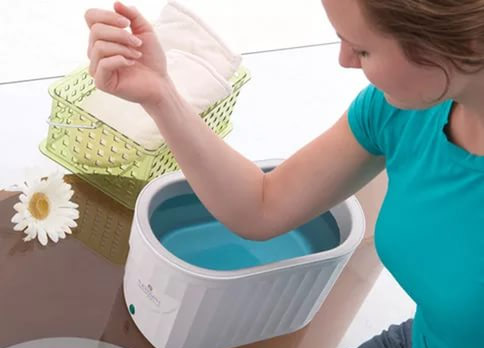
Hot potato compresses and blue clay applications relieve pain and swelling very well. Inside, you can take decoctions of dandelion, cinquefoil, elecampane, St. John's wort.
Other diseases of the elbow joint
Most often, the defeat of the elbow is observed in inflammatory diseases. In addition to damage to cartilage and bone tissue, as in arthritis, muscle-tendon structures can suffer for various reasons. Various joint injuries lead to sprain and rupture of the ligaments.
Epicondylitis
This is, which is formed after intense physical exertion. The disease is diagnosed mainly in athletes. People over 40 are also susceptible to it, especially those who perform daily heavy monotonous work with their hands. Often, the pathology occurs after an injury, often formed against the background of osteochondrosis of the cervicothoracic region. The process can be internal or external.
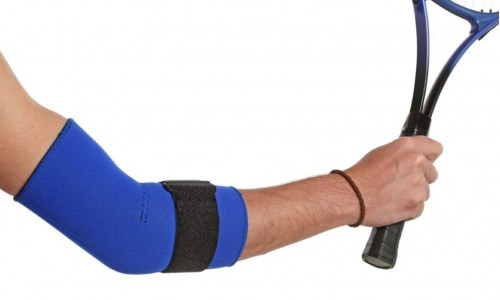
Symptoms of epicondylitis
The main sign of joint inflammation is a sharp pain in the elbow, which increases during exercise or when lifting a load. Rotational movements are especially difficult. At rest, the hand does not hurt.
Patients complain of decreased muscle strength in their arms. It becomes difficult to hold small objects. When pressing on the joint, pain is felt.
Often, the disease passes into a chronic stage, exacerbating cyclically after excessive physical exertion. The pain may radiate from the elbow to the forearm and hand.
Treatment of epicondylitis
Therapy of the disease is most often complex. The choice of drugs depends on the stage of the disease and the condition of the muscles and ligaments.
Purpose of treatment:
- restore blood circulation;
- stop the pain syndrome;
- restore joint flexibility and mobility;
- prevent muscle atrophy.
Therapy consists in immobilizing the diseased limb by applying a plaster cast or. It is also necessary to take medications prescribed by a specialist. The patient is recommended physiotherapy with the use of phonophoresis, Bernard currents, paraffin applications.
Treatment includes blockades with the introduction of novocaine (or lidocaine) and hydrocortisone. They relieve pain and improve the nutrition of muscles and ligaments. Along with this, analgesic and warming ointments, rubbing and compresses from medicinal herbs are used.
tendovaginitis
Pathology is an inflammation of the inner lining of the muscle tendons attached to the joint. Pathology is formed as a result of excessive professional, sports loads or infection of the joint and periarticular tissues. Often the disease occurs against the background of rheumatism or rheumatoid arthritis.
Symptoms of tendovaginitis
With the development of an acute form of the disease, the elbow noticeably swells, deforms. Pain is felt in the area of the inflamed tendons. Movements in the joint are limited and are accompanied by a clearly audible creak.
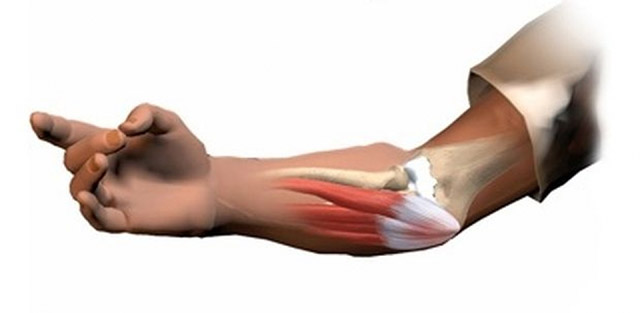 With a purulent form of the disease, the patient's body temperature rises, chills and fever develop. Symptoms of intoxication of the body increase, lymph nodes increase. Compression of the vessel that feeds the tendon with blood can lead to partial necrosis of the connective tissue.
With a purulent form of the disease, the patient's body temperature rises, chills and fever develop. Symptoms of intoxication of the body increase, lymph nodes increase. Compression of the vessel that feeds the tendon with blood can lead to partial necrosis of the connective tissue.
With untimely access to a doctor, the pathology spreads to nearby tissues.
Therapy Methods
In any form of pathology, the treatment is accompanied by immobilization of the joint with the help of splinting. To relieve pain and inflammation, NSAIDs, antibiotics, ointments, and physiotherapy are prescribed.
In cases of acute purulent tendovaginitis, it is necessary to open the tendon bag in a hospital. Further treatment can be carried out at home under medical supervision.
You can reduce pain and inflammation in the joint and adjacent muscles with the help of folk remedies. But it is recommended to use them only as an addition to the main (drug) therapy prescribed by the doctor. It is impossible to cure tendovaginitis with non-traditional methods without the help of drugs.
cyst (neoplasm)
In addition to inflammatory diseases, the elbow joint is also prone to other ailments. After injuries, a cyst often forms. It manifests itself in the form of a tumor-like formation filled with liquid contents. This is most often a benign neoplasm that requires treatment.
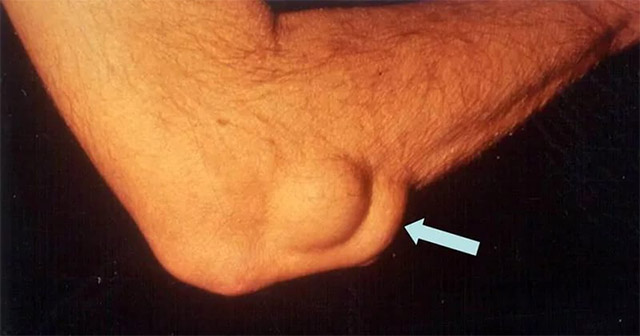 Therapy may be:
Therapy may be:
- Conservative. The patient is assigned a puncture (piercing) of the cyst. Its contents are pumped out and anti-inflammatory drugs are injected into the vacated cavity, after which a pressure bandage is applied.
- Surgical. In this case, the tumor is removed under local anesthesia. The operation is less traumatic and does not cause complications.
osteophytes
Often, bone growths, or spurs, form on the joints. In the medical literature they are called osteophytes. They occur quite often, although less often than. Elbow growths are manifested by pain, aggravated by movement. Outwardly, they are completely invisible.
Treatment is mostly conservative. Includes physiotherapy, hormonal and anti-inflammatory therapy, therapeutic ointments, creams. If it is not possible to get rid of the pathology with the help of medicines, they resort to surgical intervention.
Conclusion
Having found symptoms of diseases of the elbow joint, it is urgent to visit a doctor. Only he can establish the correct diagnosis and prescribe treatment. Do not self-medicate. Wrong actions can not only aggravate the pathology, but also cause considerable harm to the body.

